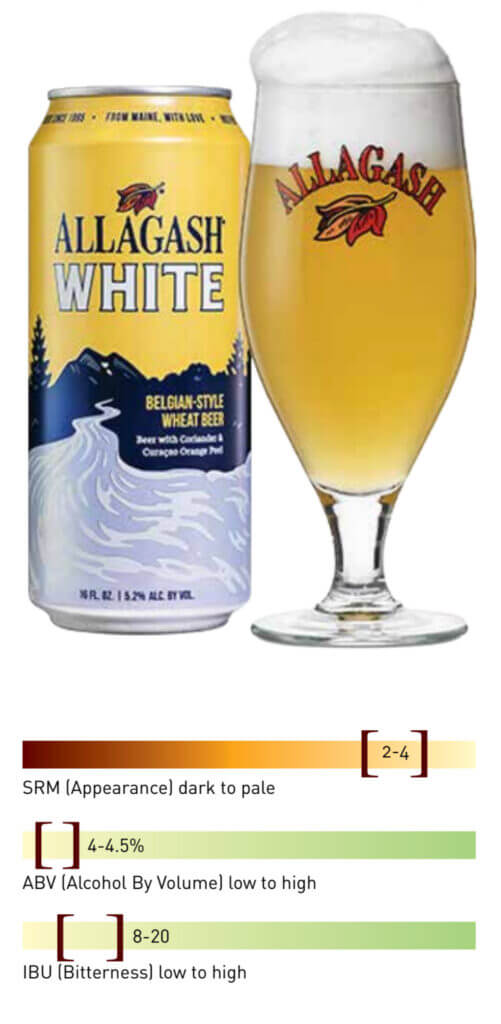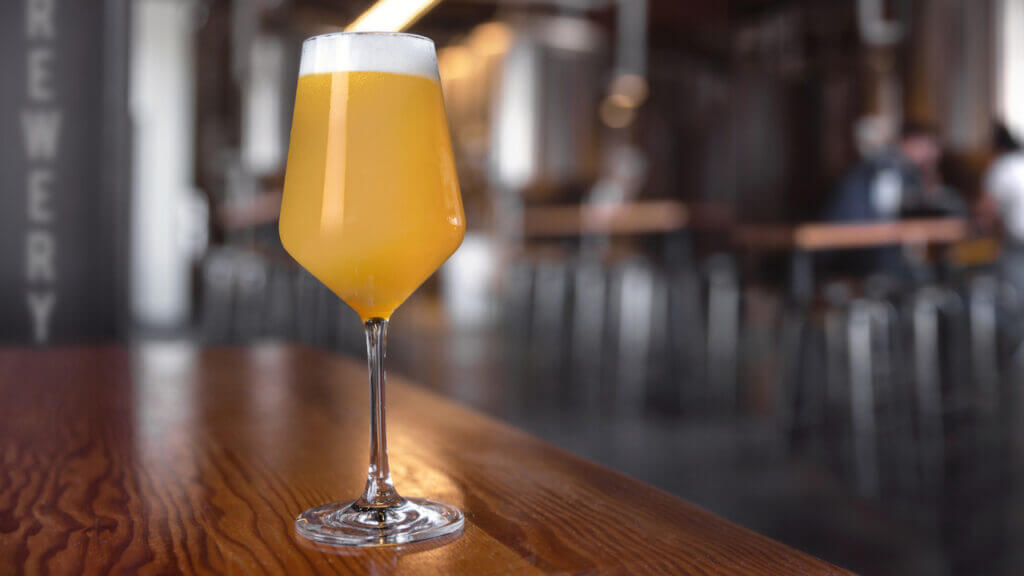
Origin: Belgium, 17th Century
History: This 400-year-old Belgian beer style sort of died out in the 1950. Thankfully, it was later revived by Pierre Celis at Hoegaarden, and has grown steadily in popularity over time, both with modern craft brewers (your favorite local) and mass-market producers (Blue Moon)
Appearance: Pale straw to noticeably light gold in color. This beer is very cloudy from starch haze and/or yeast, which gives it a milky, whitish-yellow appearance. Dense, white, moussy head. Head retention should be quite good.
Aroma: Moderate malty sweetness (often with light notes of honey and/or vanilla) with light, grainy, spicy wheat aromatics, sometimes with bits of tartness. Slight perfumy coriander, often with complex herbal, spicy, or peppery notes in the background. Moderate zesty, citrusy-orangey fruitiness. A spicy-herbal hop aroma is optional but should never overpower the other characteristics. Spices should blend in with fruity, floral, and sweet aromas and should not be overly strong.
Flavor Profile: Pleasant malty-sweet grain flavor (often with a honey and/or vanilla character) and a zesty, orange-citrusy fruitiness. Refreshingly crisp with a dry, tart, finish. Herbal-spicy flavors, which may include coriander and other spices, are common and should be subtle, not overpowering. Hop bitterness is medium-low and shouldn’t interfere with refreshing flavors of fruit and spice.
Bitterness: LOW: 8–20 IBU
Commercial Examples: Allagash White, Celis White, Hoegaarden Wit, Ommegang Witte
Recommended Food Pairings: Shrimp, Seafood, Spring and Summer Salads

